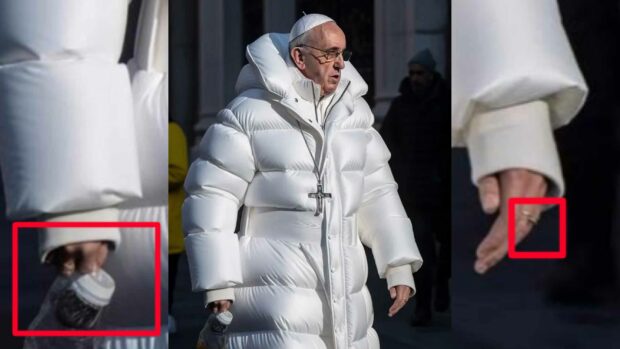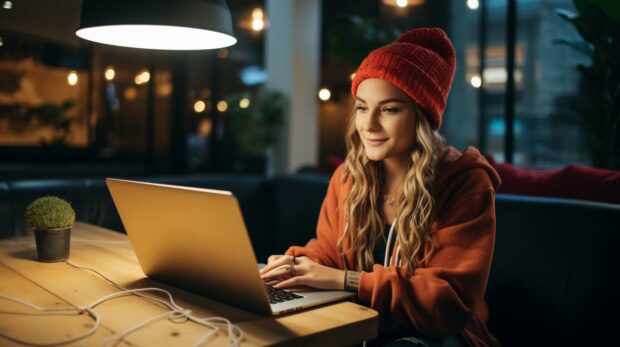As the saying goes, “A picture is worth a thousand words,” and in some cases, those words can be misleading, manipulated, or downright false. The spread of fake images that look real, often driven by nefarious motives like political disinformation or personal gain, has always been an issue. But with the rise of sophisticated AI image generators, like DALL-E and MidJourney, it’s growing into a much bigger concern. In this article, we’ll review the strategies and tools that can help you detect fake images online.
Unmasking Deception: How To Detect Fake Images Online ... #AIimages #AIdetection #AI #Propaganda #scams Share on XExamples Of How Fake Images Can Be Used To Deceive You
Manipulated photos and computer generated images have been all around us for decades. From magazine ads to your own wedding photos, it’s not uncommon for images to be enhanced or altered. Many of the images on MethodShop.com are Photoshopped or AI-generated. The issue is when images are being used in nefarious ways.
Some examples on how fake images can be used include the following:
- Romance Scams
- Corporate Deception
- Ransom Scams
- News Cycle Distraction
- War Propaganda
- Fake News
- Political Misinformation
- Money Scams
The Three Types Of Deceptive Images
Fake images come in various disguises, but they can broadly be categorized into three types: old images falsely being presented as new images, Photoshopped images, and AI-generated images. Understanding these categories is the first step towards becoming a discerning consumer of visual information.
Old Images Being Presented As New Images
One common misinformation tactic is presenting old images as new or related to a different context. This happens most commonly with combat and war footage. Propagandists may use old images to help create new misinformation campaigns against their enemies. For example, a terrorist organization may use old videos and photos of an attack to help generate new unrest among their supporters.
To spot these old images, we need the right tools. Here’s where the RevEye Reverse Image Search Chrome extension comes to the rescue. This nifty extension allows users to conduct reverse-image searches using Google, TinEye, Bing, and Yandex simultaneously.
PRO-TIP: TinEye stands out with its ability to sort images by date, making it easier to expose older media falsely presented as new content. This feature is especially useful for newsrooms vetting user-submitted content.
Exposing Photoshopped Images
Adobe Photoshop and similar image editing software have made it easier than ever to manipulate images. Crafty scammers often use Photoshop to create convincing but fraudulent visuals. To detect fake images that have been manipulated, carefully analyze images for any irregularities such as lighting differences, jagged edges, or inconsistent shadows.
In 2010, the BP oil company got caught using Photoshop to exaggerate their response to the Deepwater Horizon Oil spill. After a careful examination, it was easy to detect and locate manipulations in the images.

Using reverse image searches can also be helpful at exposing manipulated photos. Images can be manipulated in Photoshop by combining elements from different images to create a new, fake image. A reverse image search can sometimes help expose an original image before it was modified.
How To Detect AI Generated Images
As technology advances, we face the emergence of AI-generated images. These computer-generated visuals can be extremely convincing and challenging to distinguish from real photographs. In March 2023, an AI-generated image of the Pope in a puffer jacket fooled millions of people around the world.

People with keen eyes have the ability to detect and locate anomalies in AI-generated images just by looking at them. For example, this image of the pope contains several clues that it is a fake. Take a close look at his left hand. He’s wearing a wedding ring. And in his right hand is a can of beer. The way that he is holding the can is also suspicious. AI image generators are notorious for not understanding how hands look and function.
Being able to identify images generated by texttoimage apps just by looking at them is hard. Thankfully, there are detection tools available to help you identify AI-created images. AI Image Detector by Hugging Face, Optic‘s AI or Not, and Illuminarty are some online resources to help identify AI-created images.
The Motive Behind Misinformation And Deception
Understanding why people create fake images that look real is crucial in combating this issue. Motivations for creating deceptive images span a wide spectrum, including:
- Attention-Seeking: Some people intentionally create false images as a way to seek attention, pull pranks, or even present themselves as experts in a specific field.
- Discrediting Others: Fake images are often used to harm the reputation of individuals, businesses, or organizations.
- Cyberbullying: The Internet provides an anonymous platform for cyberbullies to torment their victims. Photoshopped images and AI-generated photos are often part of that harassment.
- Political Disinformation: Information, factual or not, can shape public opinion. And fake images are a potent weapon for those looking to deceive and manipulate the masses or manipulate public sentiment.
- Emphasizing One’s Own Point of View: Fake images are used to reinforce one perspective and persuade others to adopt that viewpoint.
Don’t Fall For The Fakes

Detecting fake images online is crucial for preserving the integrity of information online. Remember that the truth can be powerful. But so can a lie. By learning to spot modified or AI-generated photos, you can help protect others in our online community.
So, the next time you come across a captivating or provoking image online, pause and ask yourself, “Is this real?” With the right skills and resources, you can unravel the story behind the pixels.
Don’t stop here; dive deeper into the future of detecting fake images and empower yourself to distinguish reality from deception. Explore the recommended tools and techniques to boost your image detection skills.











 What Is The Feast Of The Seven Fishes And How Did It Become So Popular?
What Is The Feast Of The Seven Fishes And How Did It Become So Popular?
Leave a Reply
You must be logged in to post a comment.